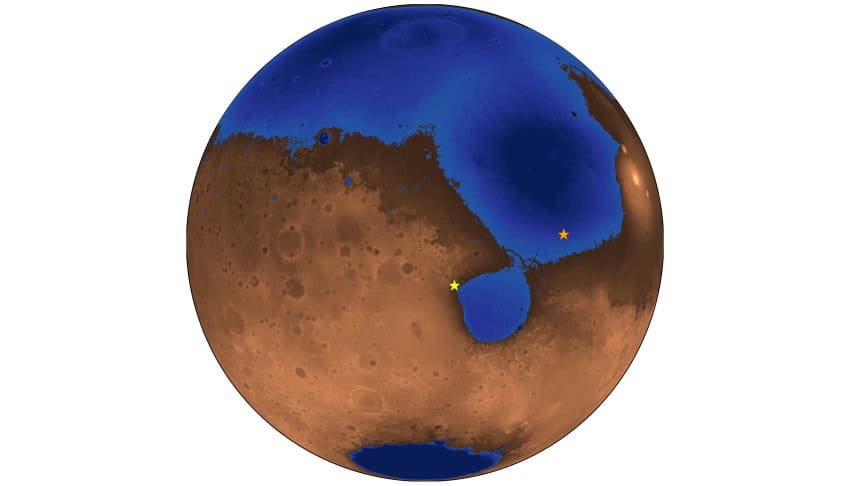There’s more evidence, if it was required, that Mars once hosted cool water in large volumes, which would have been an environment well-suited for microbial life to evolve on the Red Planet.
Two new pieces of research released this week dovetail nicely with a third which describes a new method to detect fossils of microbial life that would be suitable to send to Mars on a rover.
Vacation-style Martian beaches
Speaking of rovers with unique equipment, scientists used radar data from the Chinese Zhurong rover to identify geological formations underneath the surface which strongly resemble coastlines.
“We’re finding places on Mars that used to look like ancient beaches and ancient river deltas,” says co-author Benjamin Cardenas of Penn State University in the US. “We found evidence for wind, waves, no shortage of sand — a proper, vacation-style beach.”
The team of Chinese and American researchers identified formations called foreshore deposits that slope downwards into oceans. The angle of the slopes on Mars fell within the range of those seen on Earth. These deposits form when sediments are carried by tides and waves into a large body of water.
“This stood out to us immediately because it suggests there were waves, which means there was a dynamic interface of air and water,” says Cardenas.
He adds, “When we look back at where the earliest life on Earth developed, it was in the interaction between oceans and land, so this is painting a picture of ancient habitable environments, capable of harbouring conditions friendly toward microbial life.”
A water-y reason for the Red Planet
Working in an Earthly laboratory, chemists recreated the conditions that best reproduce Mar’s rusty hue, and their results also support a water-y Mars.
The Red Planet is red thanks to iron oxide minerals that have rusted in the presence of water. But exactly how this rusting happened has been intensely debated.
Iron oxide minerals come in various types that reflect how they were rusted. Previous researchers concluded that Mars’s dust would be an iron oxide that forms in dry conditions, hematite.
But now, a team of American and European researchers have determined that the Martian red is better explained by an iron oxide called ferrihydrite, a mineral that forms in cool, wet conditions.
“Mars is still the Red Planet,” says lead author Adomas Valantinas of Brown University in the US. “It’s just that our understanding of why Mars is red has been transformed. The major implication is that because ferrihydrite could only have formed when water was still present on the surface, Mars rusted earlier than we previously thought.”
The team eagerly awaits dust samples taken by NASA’s Mars rover Perseverance to check their conclusions.
“Once we get these precious samples into the lab, we’ll be able to measure exactly how much ferrihydrite the dust contains, and what this means for our understanding of the history of water – and the possibility for life – on Mars,” says Valantinas.
Lasers fit for a rover
The growing evidence for large bodies of water on early Mars has fuelled innovations for detecting fossils of microbial life. Now, researchers led by Algerian scientist Youcef Sellam have developed a miniature laser-powered mass spectrometer that is small enough for a rover.
Mass spectrometers can heat very small samples to analyse their chemical components.
The miniature laser-powered device successfully identified traces of microbial life in gypsum on Earth. Gypsum is a whiteish mineral made of calcium, sulphates and water which forms after pools of water suddenly evaporate.
“Gypsum has been widely detected on the Martian surface and is known for its exceptional fossilization potential,” says Sellam. “It forms rapidly, trapping microorganisms before decomposition occurs, and preserves biological structures and chemical biosignatures.”
One of the chemical biosignatures include the presence of certain clays that form around organic byproducts but are otherwise rare.
Finding fossils of alien life would be one of the most important discoveries ever made in science. Therefore, the new detection method could inform the locations of future rover missions. However, Sellam cautions, “An additional independent detection method would improve the confidence in life detection.”
Source link
Read More
thesportsocean
Read our previous article: Secretary birds are expert snake killers
